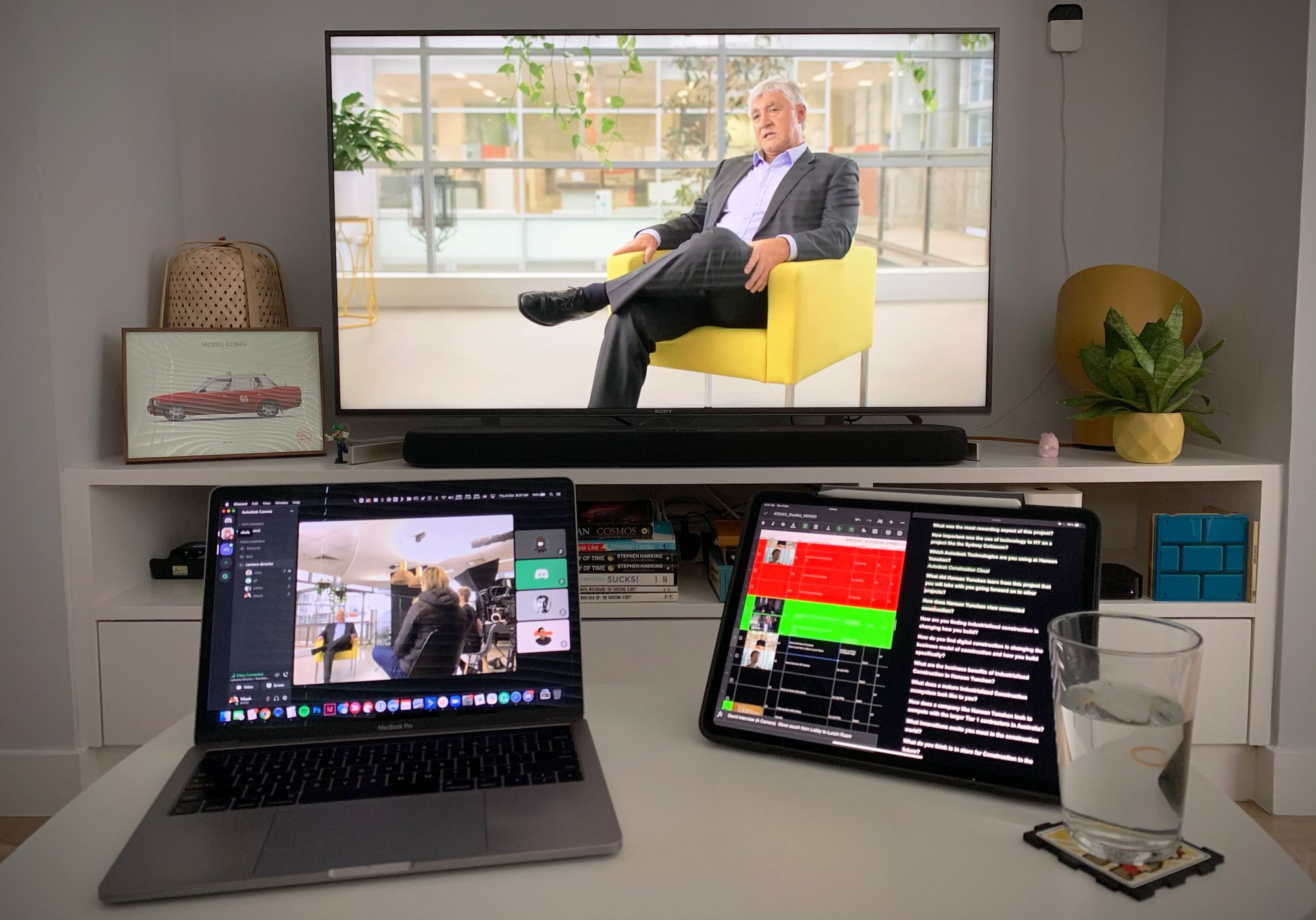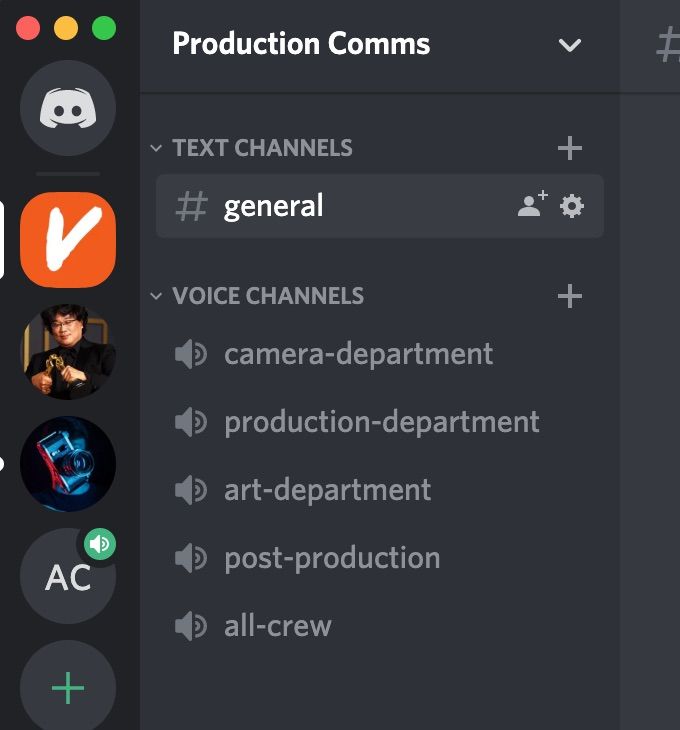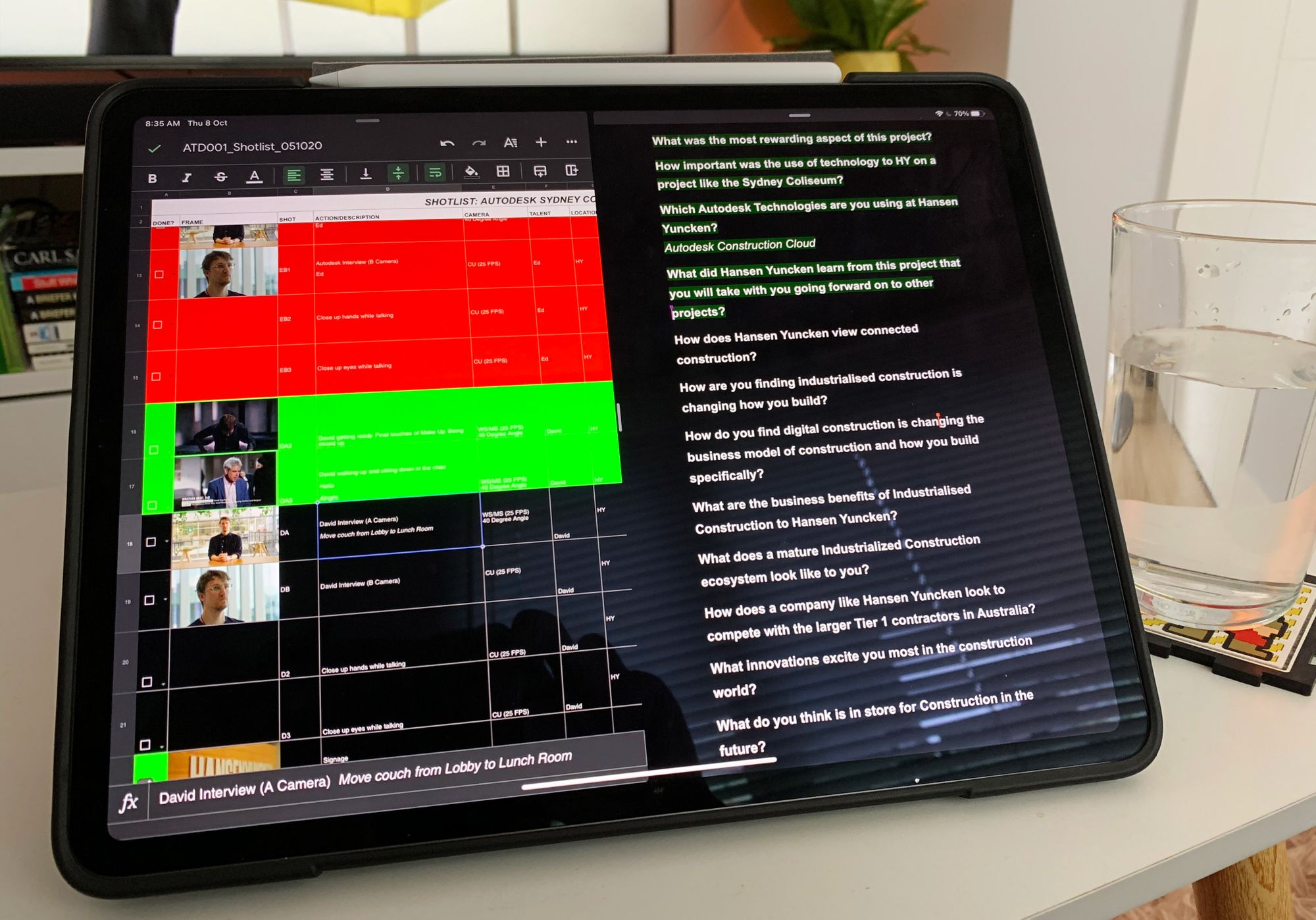How I directed a large scale commercial campaign remotely
Covid-19 has thrown the world into chaos. Like most industries film production has been heavily affected. As an industry, we rely on coming together on set to create magic. However, during Covid-19 it’s ideal to have fewer people on set to protect the crew and talent’s safety. This plus the constantly changing travel and public gathering restrictions are making it more challenging to execute larger scale film productions.
At the height of the pandemic, I was approached by Autodesk to direct a large cinematic documentary campaign in Sydney. The problem was that I was in Hong Kong and even though I was allowed to enter Australia, the quarantine and incoming flight restrictions made it very difficult to travel between Sydney and Hong Kong. To make matters even more complicated, the clients were based in the United Kingdom and in the United States. The team and I needed to find a solution that would allow me to direct the shoot remotely and that would allow the clients to monitor the feed and view instant playback to approve takes. In this article, I will explore the technical solution we created to produce the film below. I will also share tips about the creative and production process that are key to pulling off a larger scale remote production like this one.
The Solution
The solution to remote productions isn’t just about using great technology to create a video feed. It’s a fifty-fifty mix between a technical solution and a creative production solution that makes sure the best quality is achieved and the production runs smoothly despite key crew and client not attending the set.
Technical Solution
We researched a comprehensive solution to receive the highest-quality remote monitoring and directing solution with the least amount of delay. This system is based on Teradek but other players such as Qtake have similar solutions.
Remote Monitoring & Directing
Two of the most important elements of a remote monitoring solution for me were being able to get a 1080p feed and to have the least amount of delay. The short delay is so important because I didn't want the crew to have to wait on me and lose time that could be spent shooting. We tested many of the usual suspects such as Zoom and Skype. However, we found that while they provided an acceptable delay, the quality of the video was often too low and too unreliable. After trying many services we ended up with Teradek’s Core service which is custom designed for remote monitoring and live broadcast.
To facilitate the feed we used a Teradek Serv Pro that connected to Teradek’s Core service through the internet. Teradek Core allows you to create a custom workspace with as many feeds as required which can then be shared using individual secure links (eg. a different feed for the client and the director).
The feed can be viewed on all iOS and Mac devices with high-quality and very little delay. The feed can also be viewed on other devices through a website but the experience is less ideal so I recommend using an iOS device. The Apple TV Teradek Core App is great to get a high-quality feed on a big screen. The iPad VUER App is great for directors to create different views combining multiple cameras and to use additional monitoring tools such as peaking, markers, and pretty much every tool you would use on set.

The Teradek Serv Pro requires a stable internet connection with about 4 Mbps per camera feed. Ethernet is ideal but WiFi works great. For outdoor scenes with no landline internet available, we used a bonded 4G modem which creates a strong internet signal by combining the signal from multiple carriers. It allows the feed to stay up even if one of the carriers has bad reception in the area. We used a third-party modem but Teradek makes the Teradek Bond which does the same thing in an even easier solution.
While we used the Teradek Serv Pro, you can use any other Teradek device that can broadcast to Core such as the Cube.

One thing to note is that this is not equipment you pick up before the shoot and just turn on. It requires a set up by someone who knows what they are doing and extensive testing which is ideally performed on the shoot location to make sure you can achieve a reliable connection and feed.
Equipment Overview
Teradek Serv Pro or Teradek Cube
Teradek Bond or 4G (Bonded) Modem
Apps Overview
Teradek Core iOS
Teradek Core tvOS
Teradek VUER iOS
The solution to remote productions isn’t just about using great technology to create a video feed.
Communication
While creating and testing the technical solution above took the longest, the biggest hurdle was to find an efficient way to communicate.
In the end, we created several Discord channels on a private server. This allowed us to have different channels for each department. In essence, this worked similar to having different crew channels on walkies on set.
We also had an iPad on location that would stream a feed of what was happening on set. This way I knew exactly what was going on and it (almost) made it feel like I was right there on set.


Creative and Production Solution
A few important elements in the production and creative process were crucial to pulling off this remote production.
Team
The team you work with is incredibly important when remote directing a shoot of this size. The key crew on my team were people I have worked with many times and that know what I require as a director. This meant that a lot less explaining was required since everybody was aligned on the style and what needed to be achieved. I do not believe we would’ve been able to create a piece so close to my original vision within the allocated time and budget if I didn’t know the crew that well. If you are working with a crew you haven’t worked with before (eg. an overseas shoot) you should definitely factor in extra shooting time to make sure you get the shots you require.
Location Recce
For a cinematic documentary like this, I would sometimes not recce every location. A lot of times the cinematographer and I are able to find out interesting shots and angles when we arrive at the location on the shooting day. However, not being able to physically attend the shoot changed the approach. I made sure I was virtually part of all recces. On top of that, the production crew took videos of every location so these could be referenced when creating the shot lists and storyboards.
It’s time to adapt so that we can all keep creating amazing work during the challenges we are facing today and in the future.
Detailed Shot Lists and Storyboards
The shot lists and boards that I made were more detailed than normal. I normally like to leave some shots open to improvisation because we can figure it out on set. However, not being able to attend set makes this extremely difficult. This is why I made sure all required shots were properly boarded and listed so there would be no unpleasant surprises in post-production.

Briefings with Talent and Crew
I had lots of meetings with the production, camera, and art department to try to plan and lockdown as many aspects of the shoot as possible. Leaving nothing up to chance because any issues take much longer to fix with a director being remote.
We also had lots of meetings with the talent. This shoot was an interview-based production so we made sure that we did extensive pre-interviews to make sure we could steer the interview questions in the right direction and would be confident we would get the answers required to tell our story.
The Future
There is nothing like being on set with the crew and the talent but it’s amazing what the film production industry can do. As an industry, we have some of the most inventive people that are dedicated to their craft and are passionate to create something beautiful. We’re all artists at the end of the day and I believe our passion makes us do remarkable things.
While remote productions are not the most efficient way to work they are here to stay. It’s time to adapt so that we can all keep creating amazing work during the challenges we are facing today and in the future.
Technology and creative approaches are changing super quickly. If you have any insights on the changes in production or would like to chat to learn more about my process, feel free to get in contact anytime.

